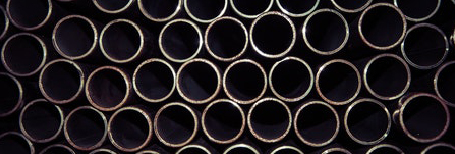
the construction materials are an integral part of the construction entity. in the engineering industry, the quality of raw materials is the foundation and determining factor in controlling the quality of engineering. it plays a crucial role in the overall quality of construction projects. once construction materials that meet relevant regulations enter the construction site and pass the acceptance inspection, all participating parties adopt necessary control measures and methods to ensure essential control over construction processes. only then can the overall construction quality be guaranteed. there are tens of thousands of construction materials, each with its own characteristics. for these various types with diverse characteristics, it is essential to clearly understand the testing requirements for each material in order to conduct more accurate material testing and quality control. the testing of these materials must strictly adhere to relevant national and industry regulations.
ⅰ. there are various types of construction materials, broadly categorized according to material composition as follows:
1.inorganic materials, including metallic materials (both ferrous and non-ferrous metals) and non-metallic materials (such as natural stone, fired clay products, cement, concrete, and silicate products).
2.organic materials, comprising materials of plant origin, synthetic polymer materials (such as plastics, coatings, adhesives), and asphalt materials.
3.composite materials, which include asphalt concrete, polymer concrete, etc. these are typically composed of a combination of inorganic non-metallic materials and organic materials
ⅱ. according to their usage categories, construction materials can be divided into:
1.structural materials, including wood, bamboo, stone, cement, concrete, metals, bricks, ceramics, glass, engineering plastics, composite materials, etc.
2.decorative materials, encompassing various coatings, paints, plating, veneers, colored tiles, special-effect glass, etc.
3.special-purpose materials, referring to those used for waterproofing, moisture-proofing, anti-corrosion, fire resistance, flame retardation, sound insulation, thermal insulation, sealing, etc.
ⅲ. noa provides material quality control services, including but not limited to:
1. supplier factory audits
2. pre-bidding factory sampling inspections
3. pre-delivery factory sampling inspections
4. on-site inspections of material quality
5. structural entity testing for projects
suppliers, as an indispensable part of enterprise production and manufacturing, play a particularly crucial role. reviewing suppliers is beneficial for companies to understand the true situation of their suppliers, including but not limited to product quality, completeness of system documents, personnel capabilities, etc. this scrutiny aids in making informed judgments for future collaborations, helping companies select suppliers that are suitable for their needs, thereby maximizing the benefits in terms of quality and economics. tailoring to client requirements, noa|noah offers comprehensive supplier factory inspections, encompassing various aspects such as clarifying basic environmental conditions, equipment status, production lines, products, and employee training at supplier factories.
supplier factory audits include:
1.factory overview
2.material control
3.inspection of key workshop processes
4.general standards inspection
general standards inspection is a part of supplier factory audits. the review team travels to the supplier's factory location to conduct on-site inspections of the factory environment, equipment, personnel, and relevant examination and evaluation of documentation. they assess and score the observed conditions, provide feedback on the audit findings, and generate an audit report for the client.
5.online product quality inspection
conducting sampling quality checks on various types of products online, verifying the corresponding factory testing documents provided by the supplier, and confirming whether the products sampled meet the quality standards specified in the testing documents.
6.social responsibility
the review team conducts an evaluation and assessment of the factory environment, equipment, personnel, and documentation based on what they witness during on-site inspections and interviews with on-site staff. they verify whether the supplier has various credit issues, is on any national business blacklists, employs or has employed underage labor, engages in intentional or malicious intimidation of employees, withholds wages and bonuses, practices discrimination, and complies with relevant management systems and documents pertaining to laws and regulations.
7.other areas of focus
conducting evaluations and reviews beyond factory overview, materials, workshop production processes, product quality, and social responsibility. this involves auditing related documents, systems, and management records.
in the quality control process, conducting pre-bidding sampling of supplier factories enables us to review and assess the actual conditions of these factories for clients. this allows us to provide comprehensive and authentic supplier information, aiding clients in mitigating potential risks.
pre-bidding factory sampling includes:
1.energy-saving building materials
the objective of testing energy-saving building materials pre-bidding is to assess whether the quality characteristics of supplier building raw materials, semi-finished, and finished materials comply with national standards and meet the requirements of construction projects.
routine testing items: compressive strength, tensile-compressive strength, shear bond strength, dry density, bulk density, thermal conductivity, water absorption rate, dimensional stability, wind pressure resistance, seismic performance, weather resistance, impact resistance, impermeability, wear resistance, fire reactivity.
applicable product range: asbestos, expanded perlite, mineral wool, glass wool, aluminosilicate fiber, carbon fiber, wood fiber, cellulose fiber, diatomaceous wood, calcium silicate, silicate composite coatings, expanded perlite, expanded vermiculite, foam glass, foam asbestos, foam concrete, cork, foam plastic, foam rubber, metal foil.
2.hydraulic and electrical materials
the objective of testing hydraulic and electrical materials pre-bidding is to examine whether the quality characteristics of supplier's semi-finished and finished hydraulic and electrical materials meet national standards and fulfill the requirements of construction projects.
common testing items:
(1)physical properties: apparent density, light transmittance, haze rate, expansion ratio specific gravity, hardness, rigidity, density, water absorption, dimensional stability, etc.
(2)mechanical properties: impact resistance, tensile properties, bending properties, electrical properties, wear resistance, friction coefficient, low-temperature performance, rebound performance, tear resistance, creep, vibration, impact, fatigue, stress relaxation, static hydraulic testing, hydraulic shock testing, etc.
(3)non-destructive testing: liquid penetration testing, magnetic particle testing, x-ray testing, ultrasonic testing, etc.
(4)electrical properties: conductor resistance, insulation resistance, electrical testing, pre and post-aging electrical performance experiments, temperature rise, leakage protection tests, etc.
applicable product range: pvc-u pipes, pp-r pipes, pe pipes, pvc-u adhesives, valves, electrical conduits, electrical conduit fittings, wire ducts, plastic pipes for communication conduits, wires and cables, household switches, household sockets, etc.
3.materials for civil engineering
civil engineering materials are the cornerstone of any construction project, forming its most crucial foundation. they constitute a pivotal aspect of the construction process. conducting spot checks on suppliers of civil engineering materials helps ascertain whether they meet the requirements of construction projects. this practice provides customers with comprehensive and accurate information about suppliers, mitigating potential risks.
routine testing includes: sand and gravel technical parameter testing, primary technical parameter testing for cement, performance testing of concrete admixtures and admixed materials, ordinary concrete performance testing, construction mortar performance testing, quality testing of block materials, technical performance testing of construction steel and welded steel bars, waterproofing material performance testing, technical parameters, and testing of construction glass, among others.
applicable product ranges include:
(1)non-metallic materials: clay, gravel, stones, bricks, tiles, ceramics, glass varieties, cement, lime, gypsum, concrete, various glasses and products, inorganic coatings, asbestos, mineral wool, fiber products, and volcanic rock products.
(2)metallic materials: steel, non-ferrous metals, and their alloy-manufactured profiles, pipes, sheets, and metal products.
(3)organic materials: wood, bamboo, construction plastics, organic coatings, and adhesives.
(4)composite materials: fiber-reinforced plastics, laminates, and other similar materials.
4.decorative and finishing materials
the composition and quality performance of decorative and finishing materials constantly impact the physical health of individuals in their daily lives. they form an important aspect of ensuring personal safety in construction projects. spot-checking suppliers of these materials helps determine whether they meet standards for comfortable living and human health, providing customers with comprehensive and accurate supplier information and mitigating potential risks.
there are numerous uncontrollable and multifaceted factors in engineering projects that cannot be anticipated or prepared for in the project plan, and the specific quality and performance of materials is one of them. in order to control, prevent, and monitor these difficult-to-predict issues, inspection personnel need to conduct diversified quality checks on materials, equipment, and more on-site. such measures help enhance the quality and safety of engineering projects while reducing construction errors and potential risks.
material quality on-site inspection includes:
1.material sample sealing management inspection
reviewing the on-site material sample sealing management helps improve the management of material use and storage by the engineering team, contributing to the enhancement of the project's quality assurance mechanism.
the services provided by noa include: reviewing the material sealing situation on the construction project site, checking for the establishment of material sample rooms; determining if dedicated positions are assigned to manage these sample rooms; assessing the implementation of relevant systems and record-keeping procedures for material sealing; cross-referencing and verifying the sample labels of sealed materials with the records maintained by on-site personnel, among other tasks.
2. brand compliance inspection
to prevent the use of unbranded or non-compliant materials, which could lead to engineering accidents, conducting brand compliance inspections on materials becomes crucial. firstly, this enhances the feasibility and quality assurance of engineering materials' sources. secondly, it helps avoid potential engineering errors and facilitates supplier tracing during the construction process if materials fail.
noa provides services that include: reviewing the selected material brands used in engineering projects to ensure their quality meets the requirements of the contracting party; scrutinizing the brand suppliers and the supply chain; conducting reviews of procurement records for corresponding brand materials.
3. sensory inspection of materials
inspectors conduct sensory examinations of materials at the construction site, making initial assessments based on the materials' appearance, color, size, dryness, hardness, and flexibility. this rapid assessment allows for the prompt exclusion of obviously non-compliant materials from the project. sensory inspections can also apply to engineering equipment. inspectors compare and verify equipment specifications and models against the requirements specified in engineering drawings through sensory inspections, enabling the preliminary exclusion of non-compliant equipment.
the convenience and speed of sensory testing allow for on-the-go inspections during the construction process, effectively reducing the likelihood of using non-compliant materials and equipment in the project.
4. on-site measurement inspection
in the construction process of most major engineering projects, work is often carried out simultaneously in different sections. however, the absence of on-site inspectors for actual measurements significantly increases the risk of construction errors such as dimensional inaccuracies and directional deviations.
noa monitoring personnel conduct real-time supervision and monitoring of engineering construction projects. they oversee construction progress in real time, ensuring that the construction results align with the requirements specified in the drawings. they also coordinate construction schedules among various units, aiming to prevent dimensional and operational errors, thereby enhancing the overall quality of the project.
5. material acceptance management upon arrival
the inspection of materials upon their arrival is crucial for engineering projects. it's essential to ensure that materials used in the project possess the necessary quality inspection reports and meet the required quality standards and regulations set by the country. guaranteeing the absence of quality issues in materials provided by suppliers is vital to ensure that the project meets the expected usage requirements and safety standards throughout construction and after completion. therefore, material arrival management inspection is indispensable.
noa’s inspection personnel will oversee the acceptance of engineering materials entering the construction site. this includes checking and verifying the material's compliance certificate, self-inspection reports from the material manufacturer, third-party inspection reports, supplier business qualifications, and whether the quantity and quality of the incoming materials meet the project's requirements.
the quality of structural components in construction determines the overall quality of the building project, directly impacting its safety and durability. therefore, increasing the intensity of inspections on structural components is crucial for enhancing their quality. in structural component inspections, it's essential to define the inspection scope, specific principles, and methods. tailoring suitable inspection methods for different projects ensures accuracy while ensuring the safety of structural components.
inspection of structural components in projects includes:
1.building energy-saving materials
building energy-saving refers to minimizing energy consumption during the production of building materials, construction of houses and structures, and their subsequent use while meeting equivalent needs or achieving similar objectives.
the content of building energy-saving inspections includes: performance assessment of main components in insulation systems, performance evaluation of external wall insulation systems, assessment of building doors and windows, energy-saving inspections for heating in residential buildings, on-site inspections for energy-saving projects, and weather resistance testing of external walls.
the primary equipment used for building energy-saving inspections includes: dust particle counters, insulation system testers, door and window airtightness testers, insulation system testers, tensile testers, thermal conductivity testers, and infrared cameras.
2. civil construction materials
civil construction materials form the very bricks and mortar of buildings, acting as crucial lines of defense in safeguarding both public lives and property.
noa|noah's offered testing content for civil construction materials includes:
(1) inorganic non-metallic materials: silicate cement, masonry cement, construction sand, crushed stone, gravel, lightweight aggregates, concrete, autoclaved aerated concrete blocks, solid bricks, porous bricks, partition boards, and more.
(2) polymer materials: elastomeric-modified asphalt waterproof membranes, self-adhesive polymer-modified asphalt waterproof membranes, pre-laid waterproof membranes, root-penetrating-resistant waterproof membranes, water stops, and others.
(3) metal materials: hot-rolled smooth round bars, hot-rolled deformed bars, welded steel pipes, aluminum alloy building profiles, seamless steel pipes, steel-plastic composite pipes, and others.
3. decorative and renovation materials
the quality of interior decoration significantly influences users' sensory experience. therefore, for the sake of livability and physical health, it's crucial to oversee and control the quality of decorative and renovation materials.
noa offered testing content for decorative and renovation materials includes:
(1) panel materials: particleboards, aluminum-plastic composite panels, ceramic tiles, natural granite building panels, solid wood flooring, decorative veneer boards, plywood, fiberboard, etc.
(2) paints and coatings: interior wall paints, exterior wall paints, wood coatings, exterior flexible putties, waterproof coatings, etc.
(3) hardware and sanitary ware: ceramic tile sealant nozzles, stainless steel faucets, sanitary ceramics, showerheads, floor drains, etc.
(4) decoration auxiliary materials: silicone structural sealants, light steel keels, adhesives, etc.
(5) others: doors and windows, bathroom furniture, hardware components, carpets, leather, wallpapers, etc.
1.customer presents specific needs
2.professional personnel liaison
3.prepare professional review and evaluation plan
4.review evaluation plan
5.quotation
6.contract signing
7.review execution
8.review project conclusion and summary





tel: 86-400 821 5138
fax: 86-21 3327 5843
email:noa@noagroup.com